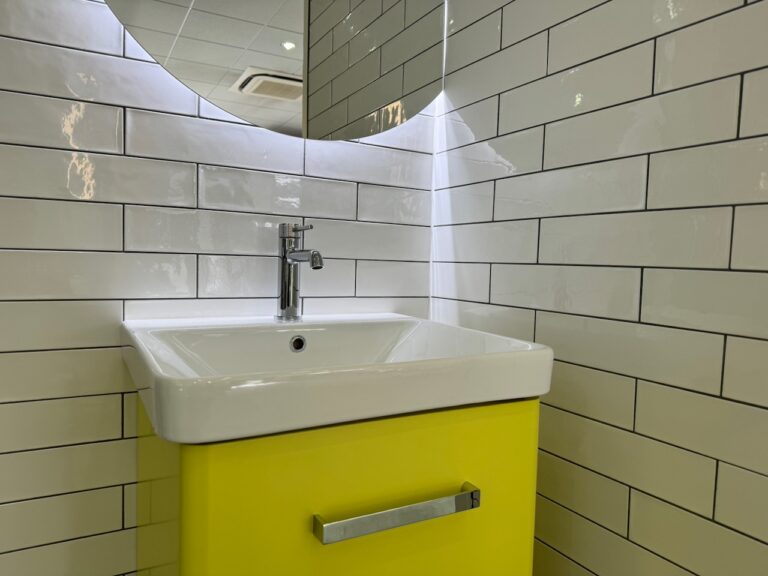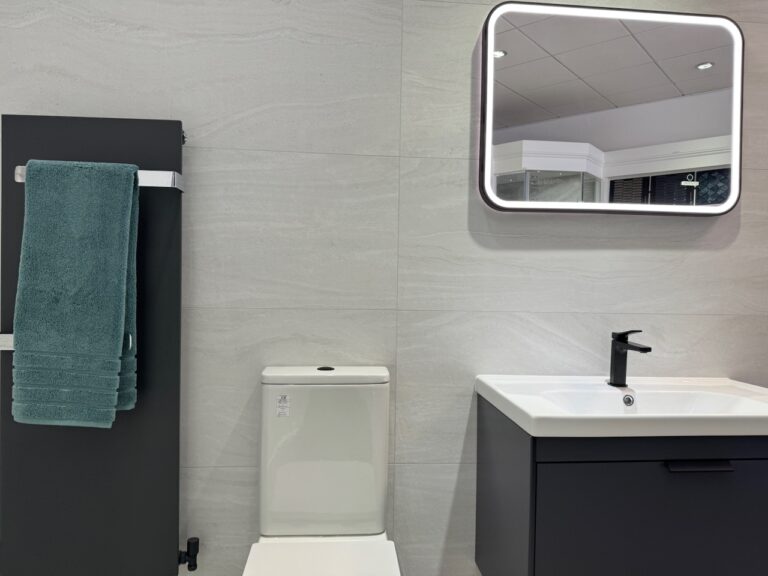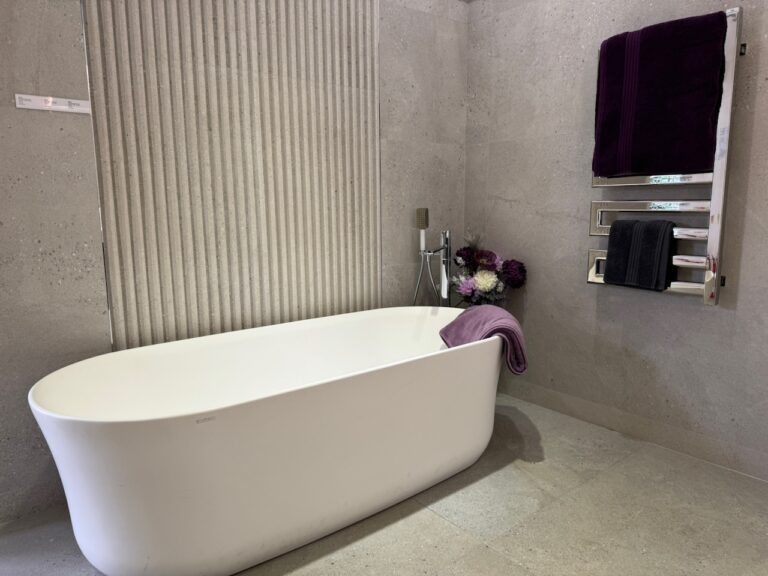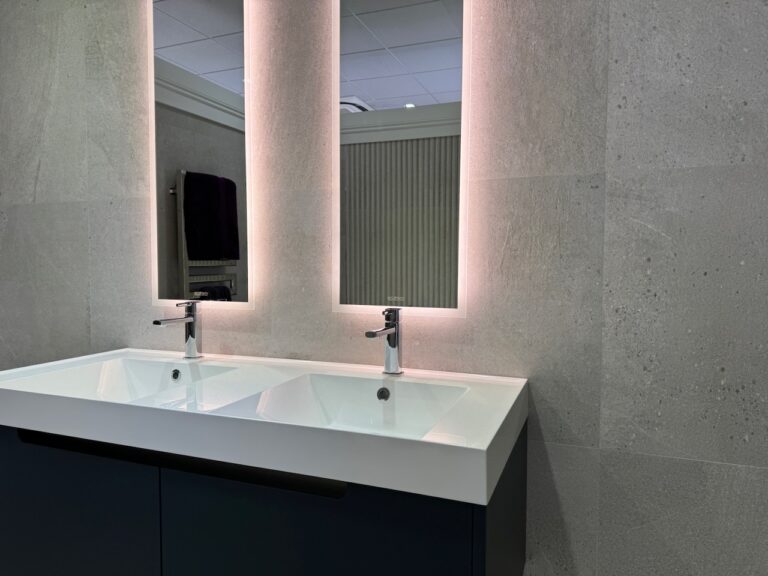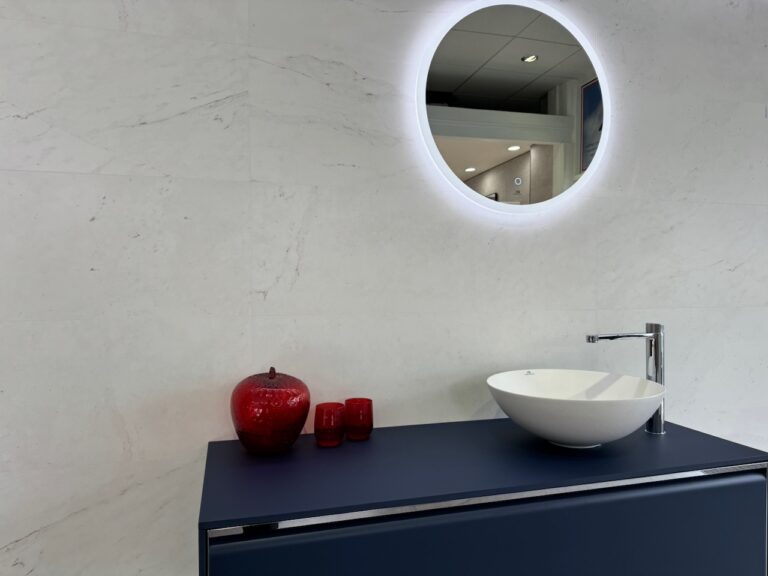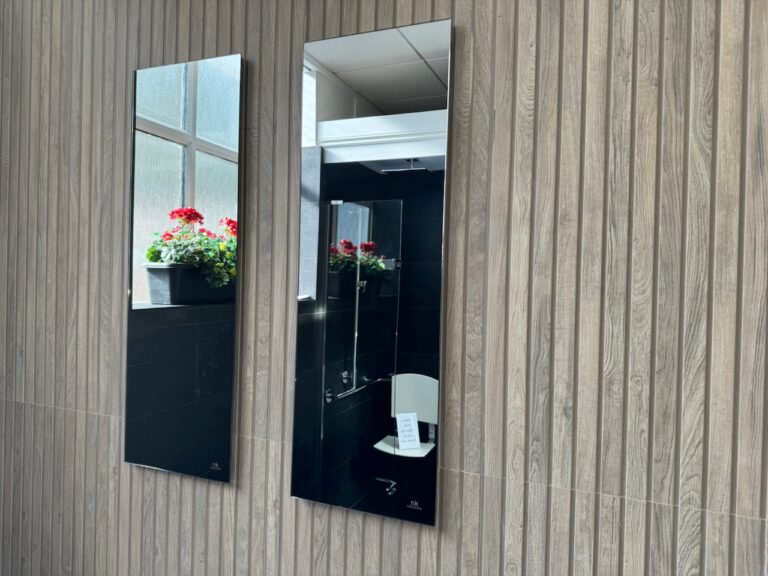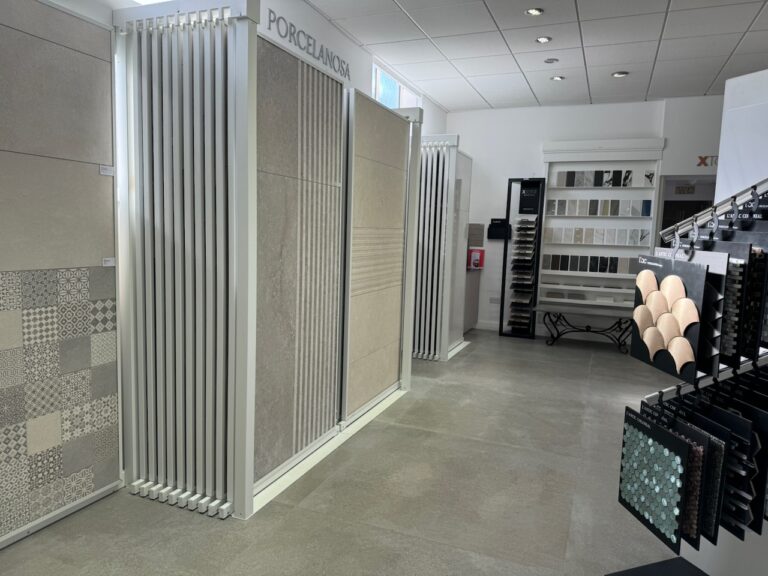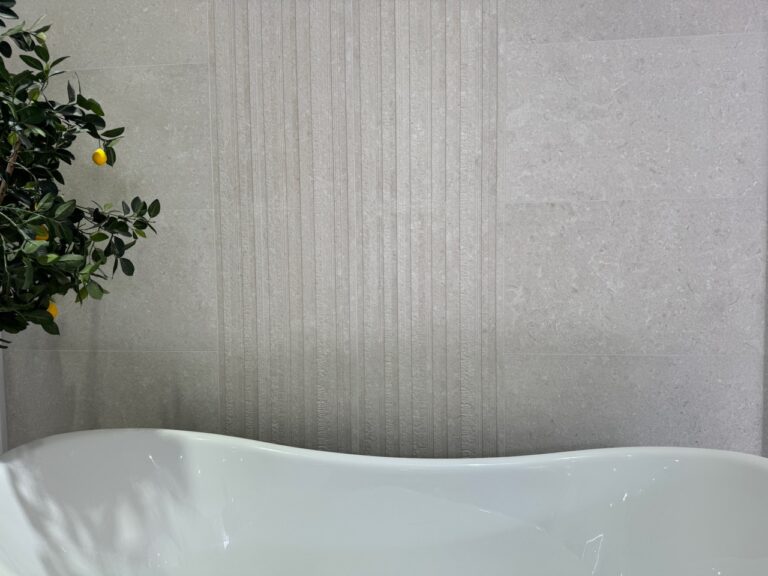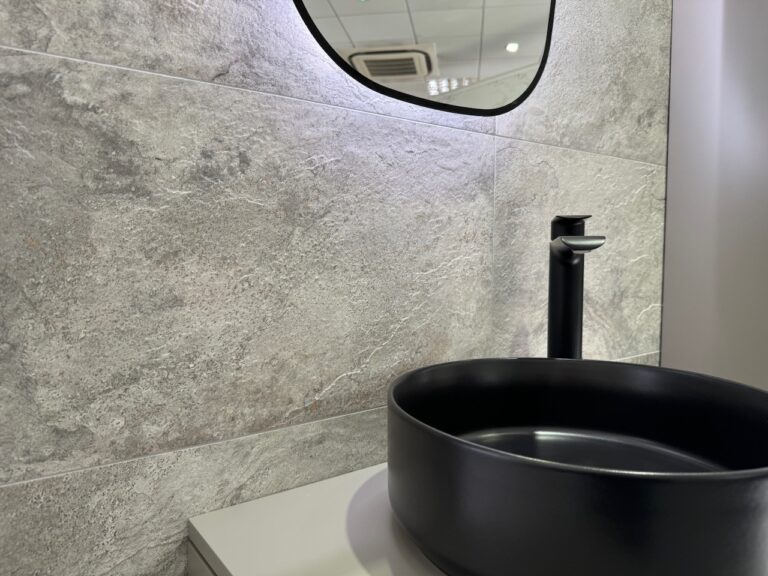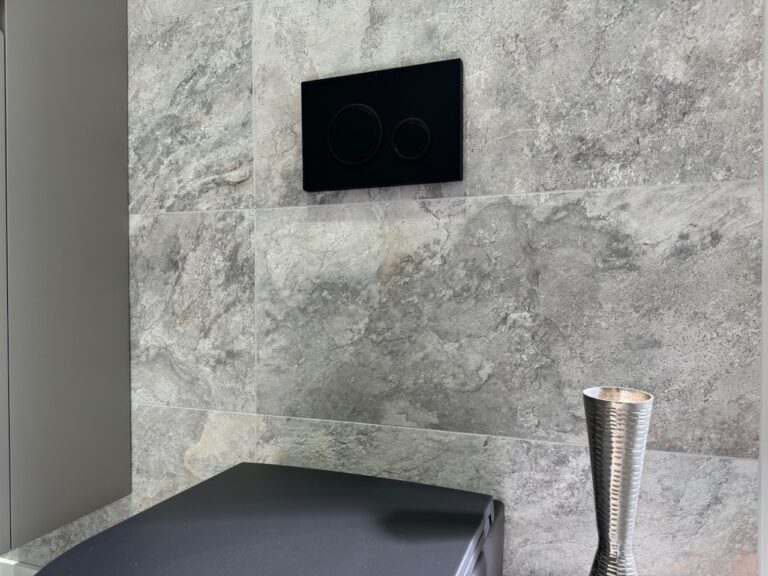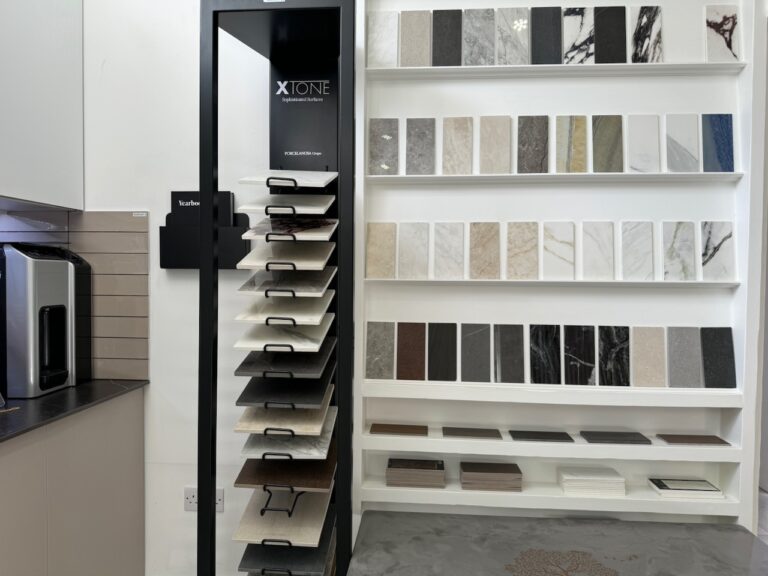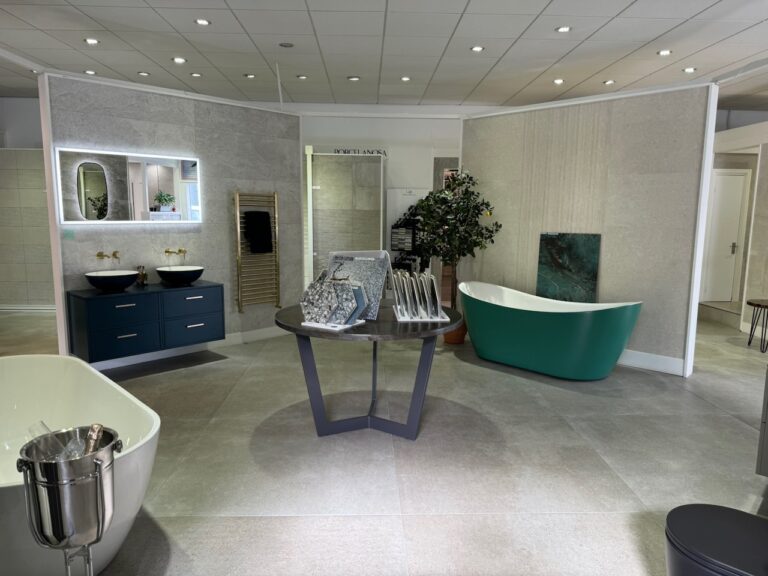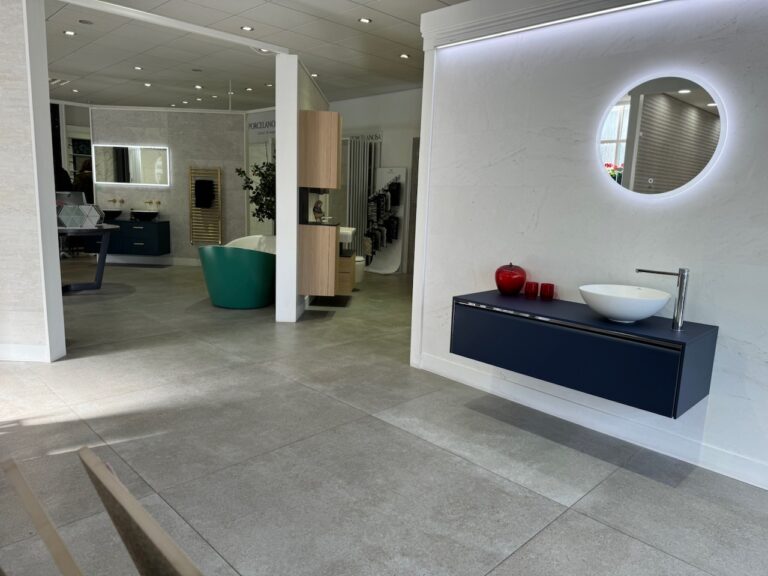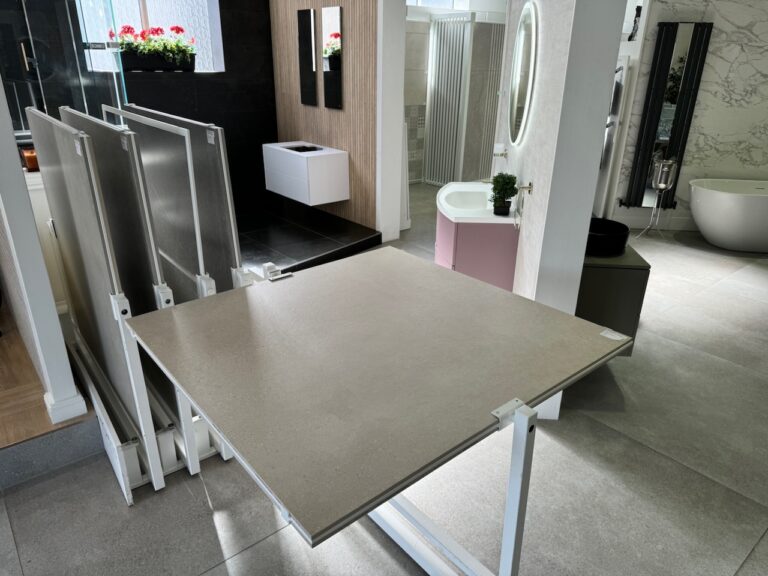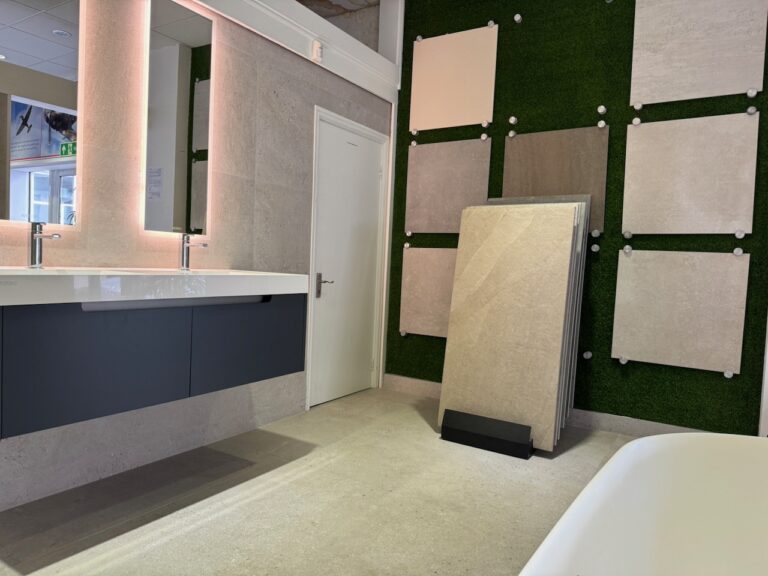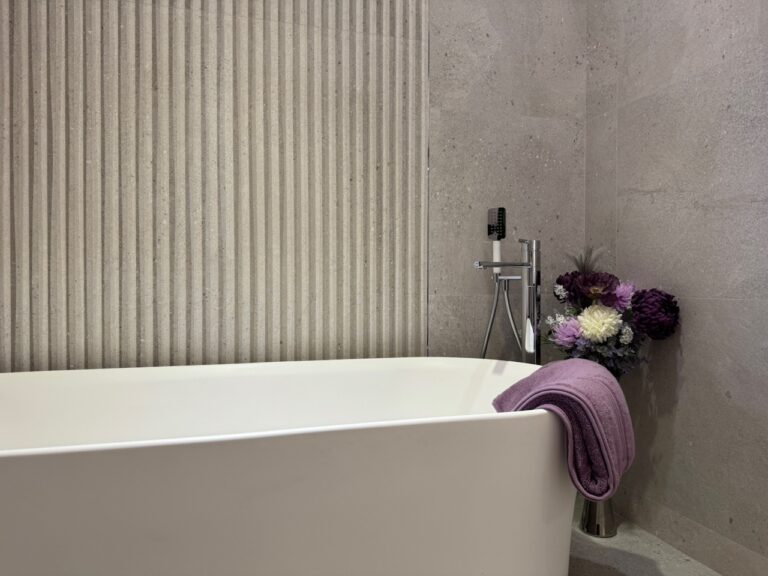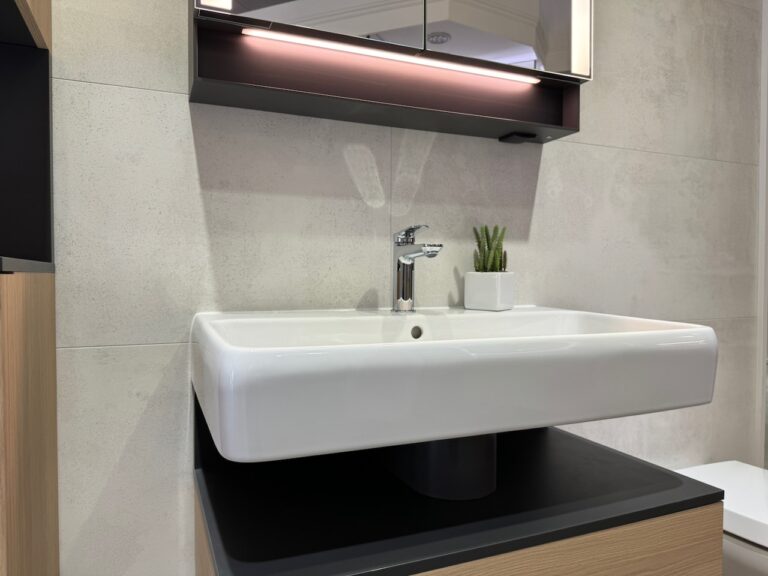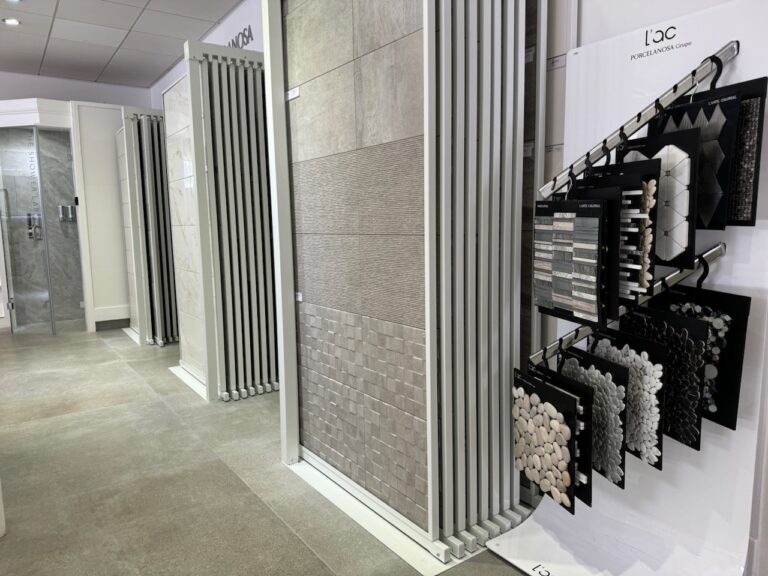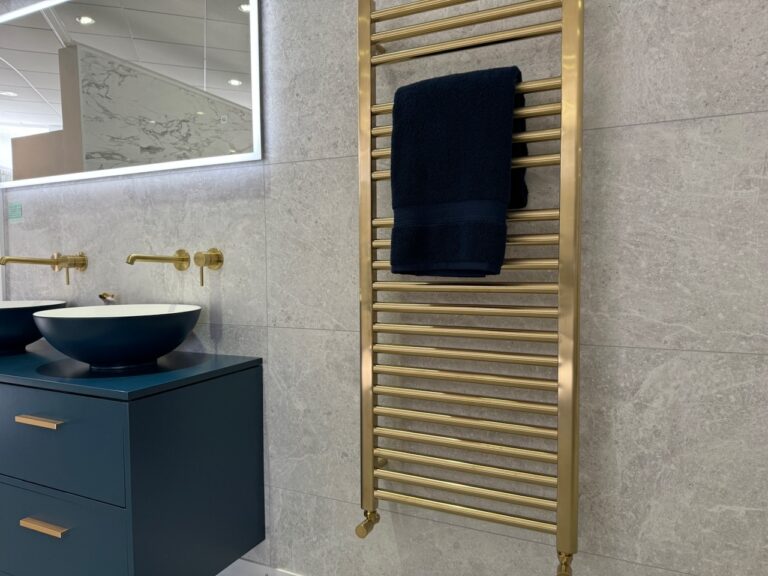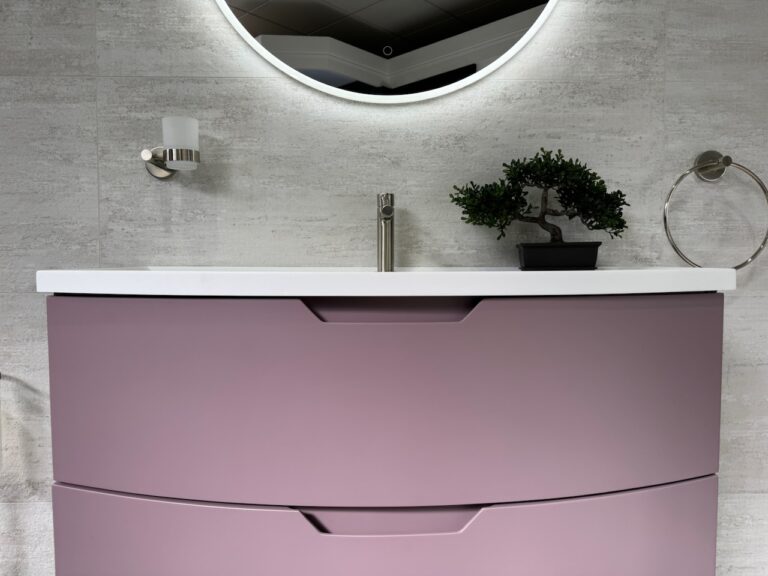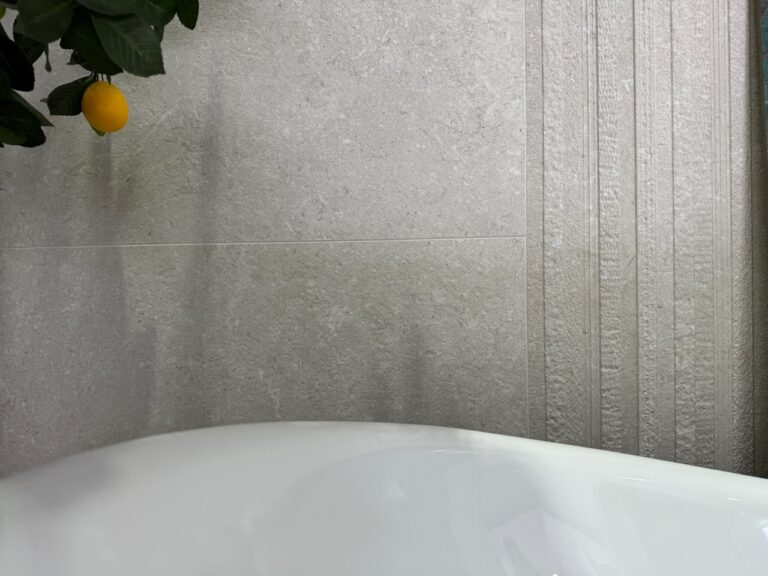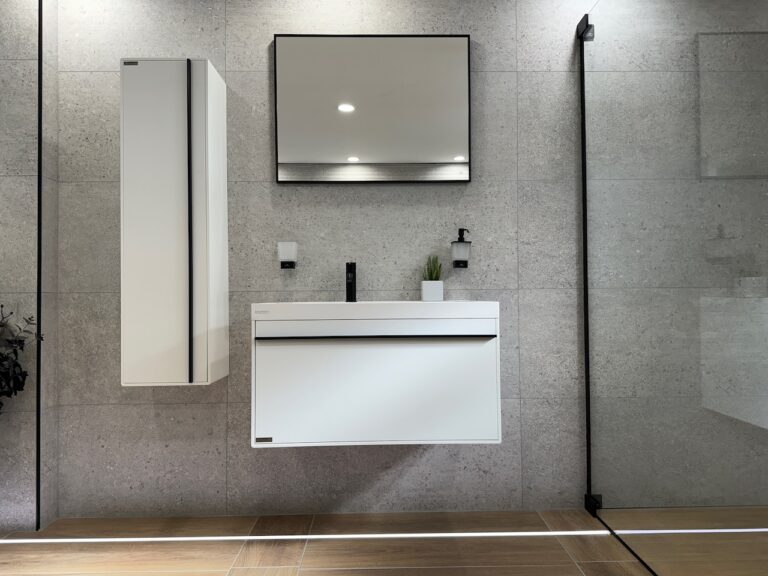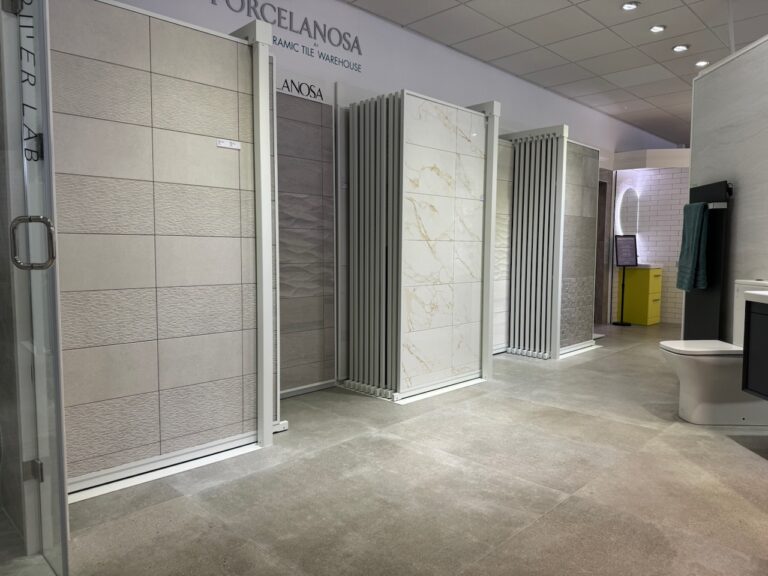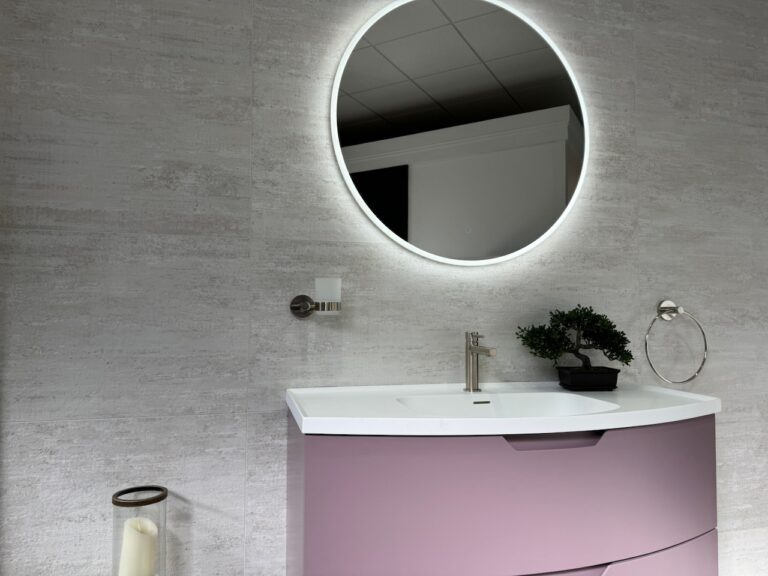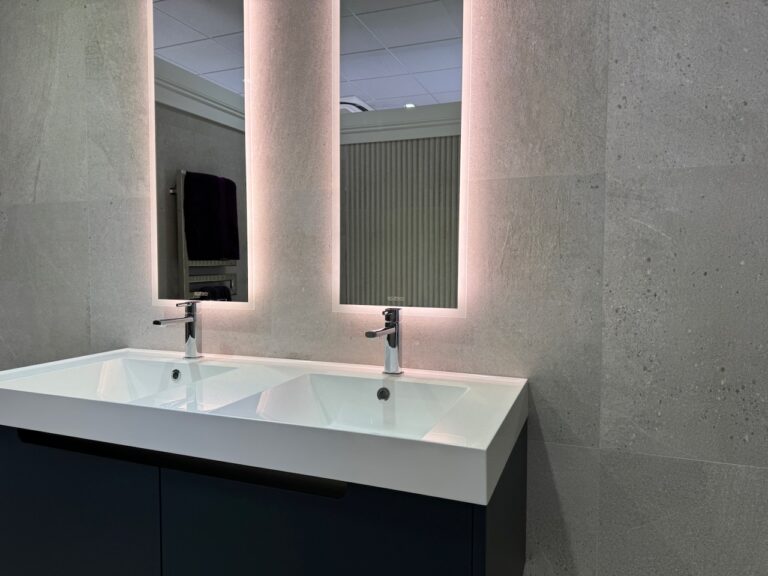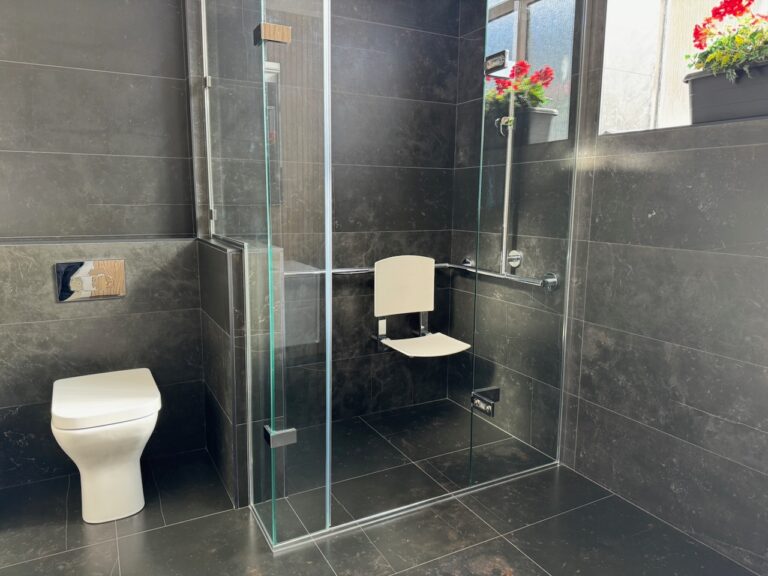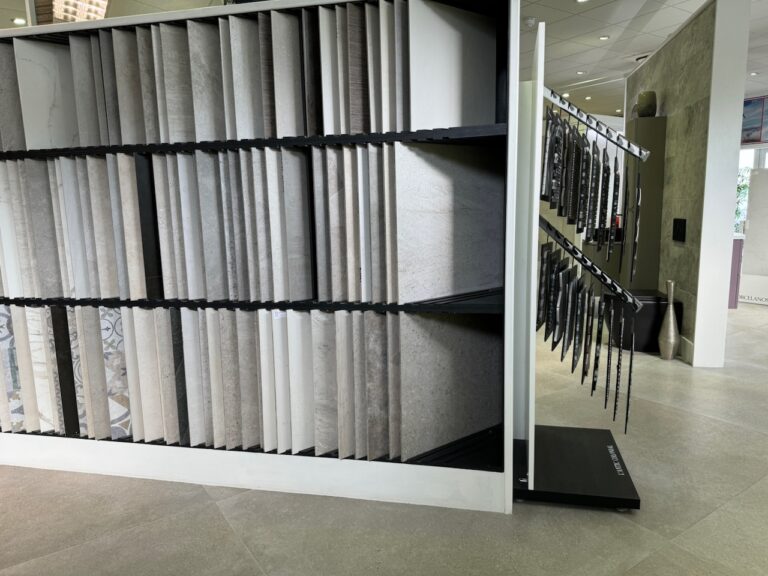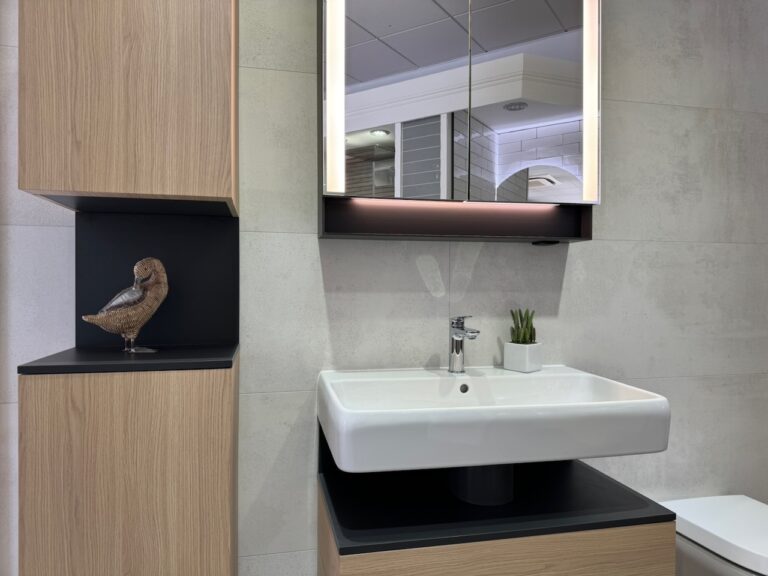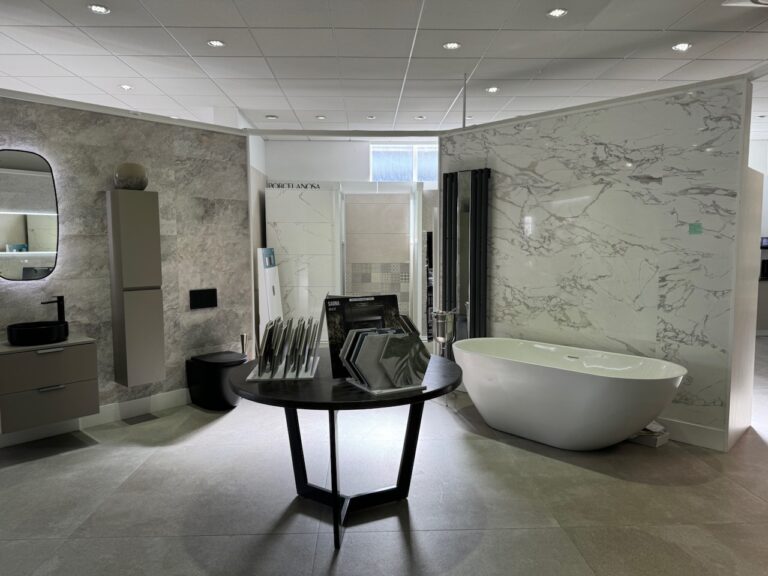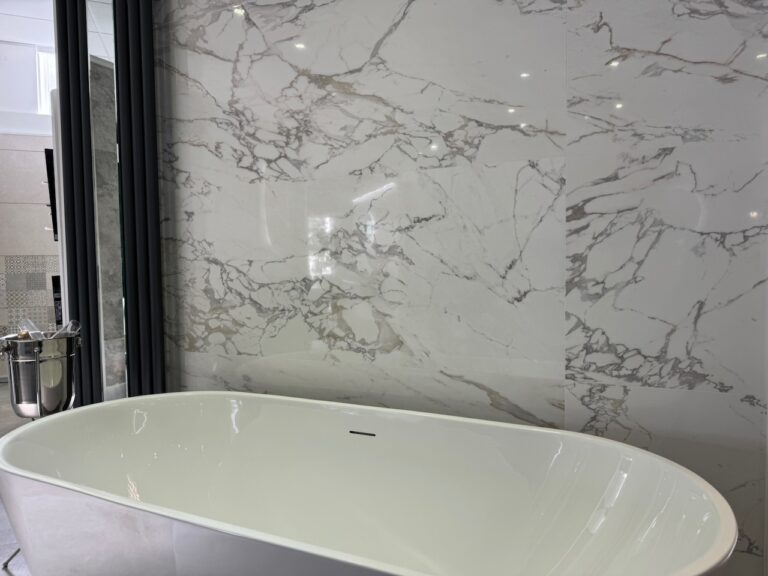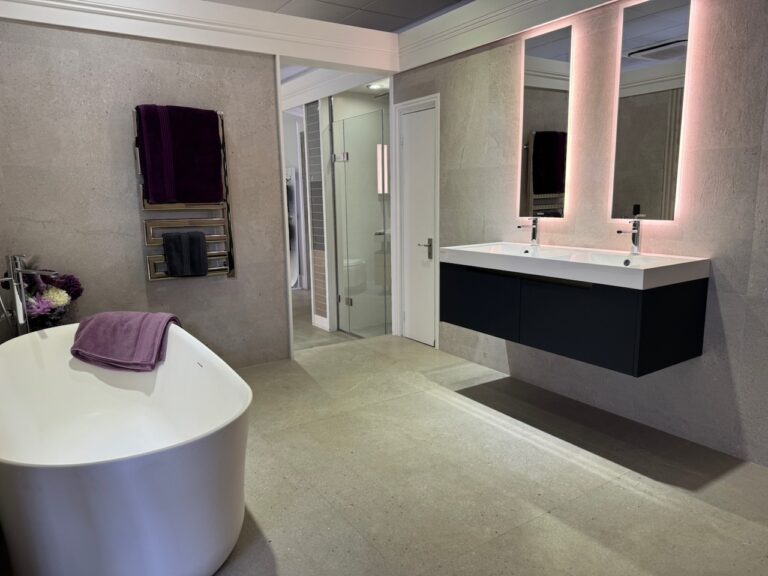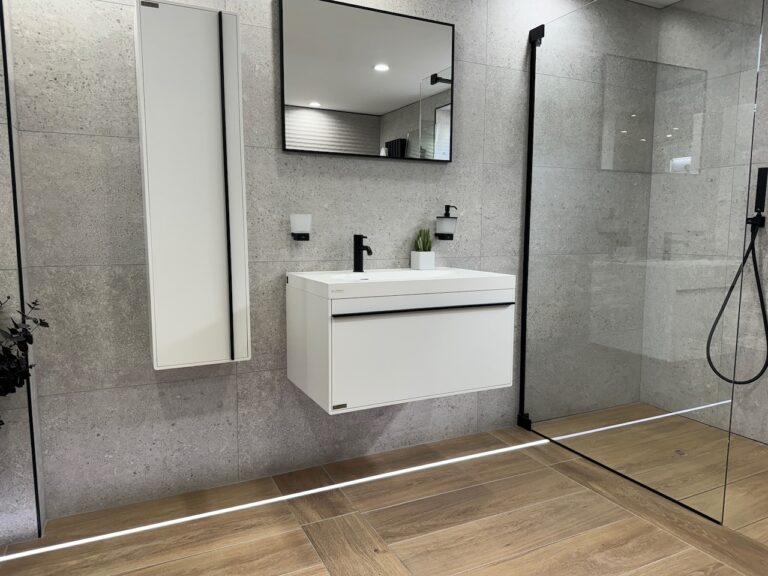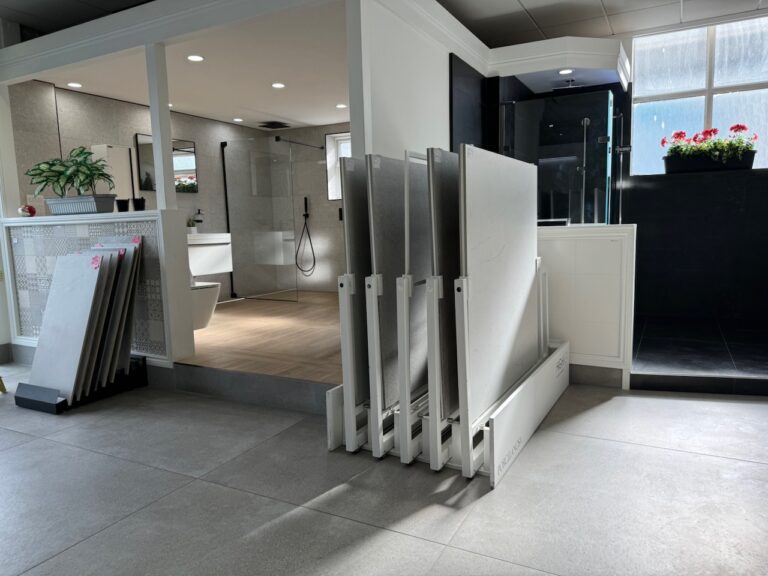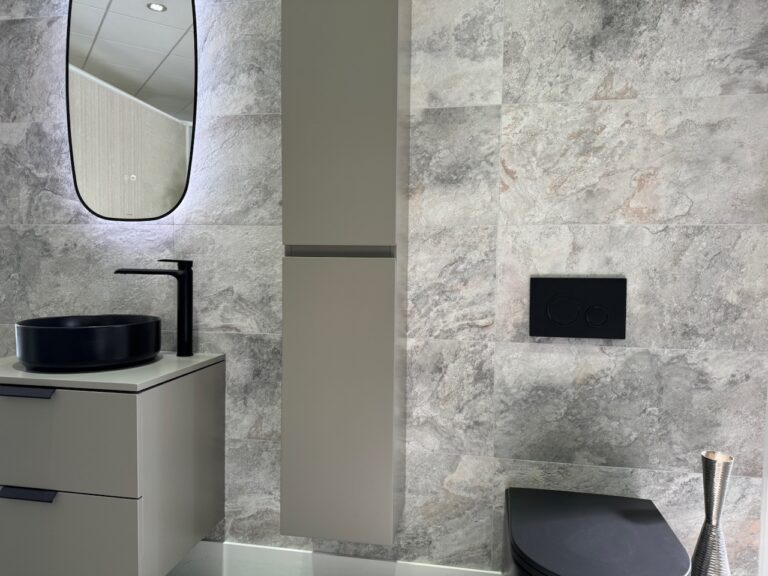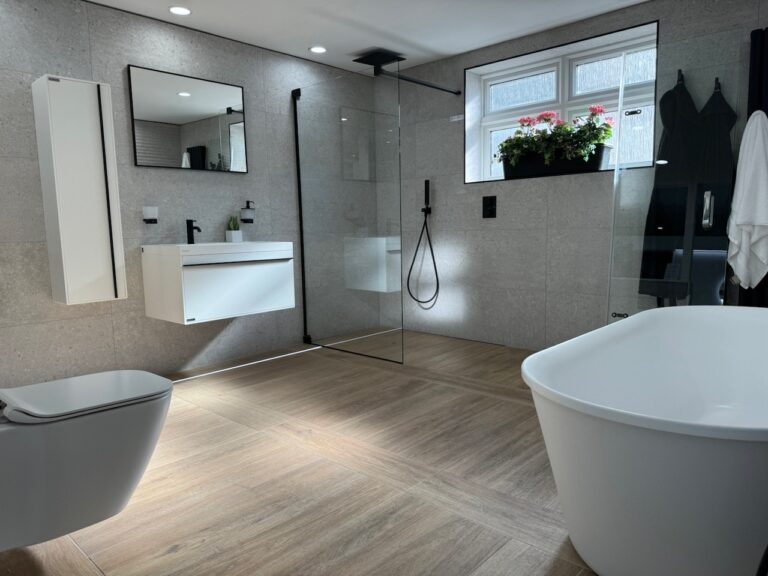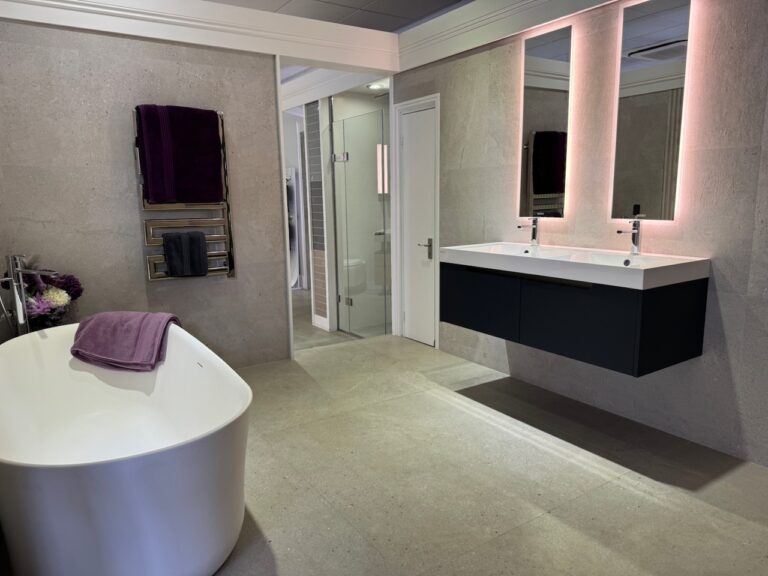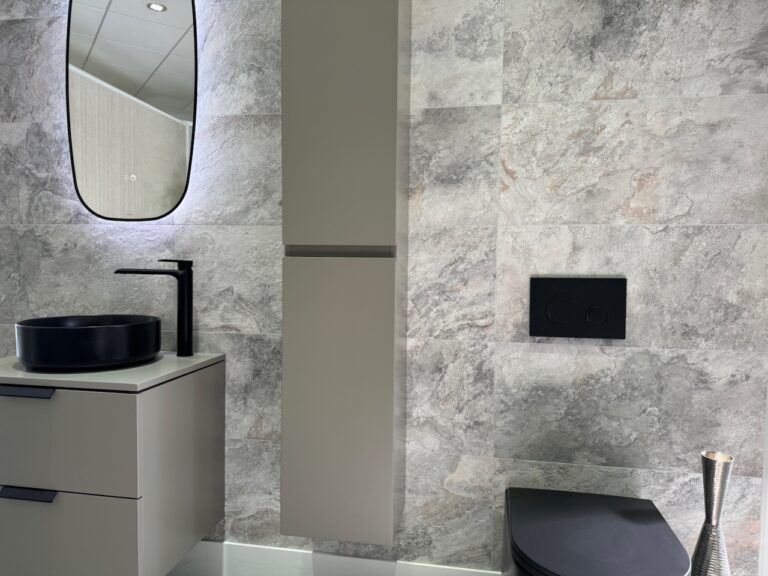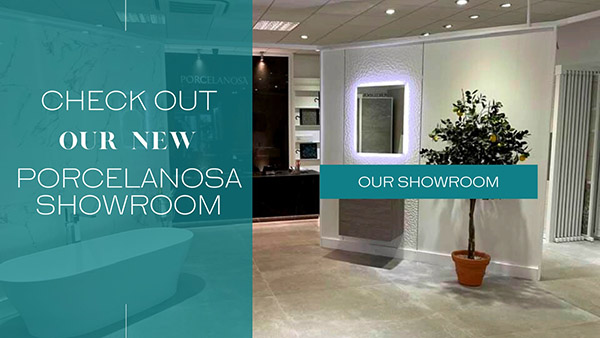How to choose the best Porcelanosa tile for your bathroom or bathrooms?
Our Porcelanosa 30% Off Sale Is Now On
Save up to 30% off selected porcelanosa tiles
Our Opening Hours
MONDAY – Friday – 8am – 5pm
Saturday – 9AM – 5PM
SUNDAY – CLOSED
TEL: 01276 984510
All sizes, all finishes – Porcelanosa tiles are the best choice for all bathroom designs
Bathrooms are one of the most important rooms in a house, so choosing your tiles is very important. The materials and designs will be determined by many factors, from size to use to specific humidity conditions. That’s why it’s important to get the right information on how to choose.
Beyond natural materials, and thanks to advancements in ceramic and porcelain technology, all types of surfaces can now be reproduced. This provides the bathroom with high functionality and comfort while retaining an appealing original aesthetic. From wood effect tiles to stone effect tiles, from the wet rooms to the outdoor shower, Porcelanosa’s tiles are perfect because of their extensive range and versatility.
So, what are the best things to keep in mind when choosing tiles for bathrooms?
1. Consider the amount of maintenance needed
Most of us hate cleaning. Especially the tub and shower in the bathroom. One way to mitigate this is to choose porcelain or ceramic tiles for the areas that are used the most because they are virtually maintenance-free. Porcelanosa tiles are extremely durable and easy to clean, so are a great choice. On the other hand, natural stone tiles necessitate more maintenance and must be sealed because they are more porous and tend to retain more dirt and grime. If you want to add texture with stone, consider using it on the floor or in a less wet area, or use a Porcelanosa porcelain tile with a stone texture finish.
2. Choose your main tile
Unlike a kitchen, when we begin a bathroom renovation, we usually have one tile in mind that will determine the overall style of the bathroom. Sometimes you want a really special or unique accent tile, other times you just want a plain white subway tile. In any case, use your dream tile as the jump-off point for the other tiles you’ll use in your design.
3. Don’t use more than three different styles of tile.
Using your main tile as the starting point, decide on the other tiles you’ll include in your design. Think of them as ‘accent tiles’: if your must-have is truly a one-of-a-kind pattern or colour, keep that the focal point of your design by using more subdued colours in your other tiles. If your main tile is very plain (such as a simple white tile) you may want to add interest with a colourful accent tile or even a smaller scale white penny tile to change it up.
4. Don’t be afraid to express yourself
If your Porcelanosa bathroom is small, as it is in most houses, nothing will make it appear larger. Some are literally a shower and a sink! So, make a statement; express yourself! You might go for luxurious grandeur, something outrageously fashionable, something to make you grin, or something that encapsulates stark simplicity.
5. Choose a showstopper.
A bathroom is an excellent place to express yourself by using a single bold tile as a centrepiece. Unlike your main tile, this might only be used once or twice on the wall, or in a small area. Let’s call it the ‘showstopper’; because there are only a few, they won’t compete with the other elements in your bathroom. This is one way to create that wow factor you’re going for. At Ceramic Tile Warehouse we display some extremely unique Porcelanosa tiles.
6. Consider scale
When it comes to bathroom floors, large-scale tiles are on trend right now. If you go down that route, you can use the same tile cut into smaller sizes in other areas in the bathroom. For example, if you use 12 x 24 tiles on the floor, you can use the same tile in 12 x 12 on the bathroom floor to continue the colour and grout lines throughout, while creating a more slip-free shower floor.
Why are Porcelanosa tiles so popular in bathrooms?
Porcelanosa bathrooms, by rights, attract a lot of praise. That wow factor provided by unusual finishes such as tiles wood effect and tiles stone effect get mentioned frequently. The Porcelanosa group itself has a long history (over 40 years) of being the market leader.
Versatility
Whatever size, shape or style your bathroom is, Porcelanosa has the tile that will compliment it perfectly. There are so many options, from wall and floor tiles to tiles with specific finishes tailored to their location, matching the way you’ll use your bathroom.
Range
The range of Porcelanosa tiles that are available is huge. Over the last 40 years, the brand has expanded its product line to include almost innumerable variations of styles. Whether you’re looking for crisp blues or warm beige, unique surface finishes or simply functional aesthetics, there will be a perfect Porcelanosa tile suited to your bathroom. At Ceramic Tile Warehouse we special order more than 150 of these styles.
Attractiveness
Whenever you enter a bathroom and think, “oh this is nice!”, chances are you’re looking at a Porcelanosa bathroom. These tiles are some of the best-looking tiles you’ll see in bathroom design. From detailed texture effects to stylish raw finishes, a Porcelanosa tile is known for its beauty and craftsmanship.
Durability
If anything, Porcelanosa tiles are well-known for their long-lasting quality. Exported from their origin to over 150 countries worldwide, they always stand the test of time. In fact, no matter what they’re going to be used for, these kinds of tiles are generally the longest-lasting materials you’ll see in any home.
Size
At Ceramic Tile Warehouse, we stock 8 different standard tile dimensions, resulting in a fantastic easy installation if the tiles meet your requirements. If this is not the case, the tiles can be easily cut down. Talk to us to know more.
Maintenance
Maintenance can be a deciding factor when designing the aspects of your home. Cleaning is simple with ceramic tiles because of the non-porous nature of the material. Porcelanosa tiles are no exception, and they can be cleaned quickly and cheaply.
The history of the ceramic tile
Ceramic tiles have a long international history dating back to antiquity, related to a shift in people’s lifestyles from nomadic to sedentary. When that happened, there was a need to create dishes for keeping food. Clay was an appropriate, natural material that was easy to find and proven to be suitable, not only to eat and store food but also to satisfy aesthetic tastes.
It all starts in Egypt.
Around 4000 BC, the first usage of ornamental clay tiles was discovered in Egypt. Later, in the 9th century BC, a breakthrough in tile production technology occurred in Mesopotamia, related to the discovery of glaze. Archaeologists uncovered several instances of remarkable glazed ceramic tiles from that period in the ruins of Nebuchadnezzar II’s palace in Babylon.
Ceramics spread to Islam
Ceramic tiles were first utilised as a wall covering during the rule of the Islamic Empires. Initially, Islamic Empire mosaics were comparable to those utilised during the Byzantine Era. Stone fragments were used to make wall drawings. Then, ceramic tiles were used in building construction under the influence of Eastern Chinese cultures via the Silk Routes.
The Turkish influence
A specific sort of ceramic tile became famous during the Ottoman Empire’s heyday. These tiles were created in Iznik, Turkey – a tiny village near Istanbul. The layers of quartz in these tiles emitted a dazzling light. These tiles were mostly geometric or flowery in style. Dueto their superb acoustics, they were commonly employed inside places of worship such as mosques.
Connoisseurs of ceramic art in Portugal
Ceramic tiles achieved their pinnacle of cultural expression and art in Portugal around the end of the 16th century. The Portuguese created square ceramic tiles that were around 5.5″ in size. These tiles were utilised in private dwellings, religious locations, and other areas like public bathrooms, monuments, and so on.
The era of Dutch tiles
Delft tiles were quite popular in the Netherlands. These tiles were square and had a central figure. The square’s four sides were adorned with intricate carvings and motifs which served as a border for the tile. These tiles were inspired by the white and blue of the china pots and ornaments of the Ming dynasty in China, being transported by the Dutch East India Company at the time, via India.
Ceramics spread to the Americas
The American colonies imported pricey ceramic tiles from Europe in the 18th century. These tiles may still be seen in historic homes around the United States. By the end of the nineteenth century, the Delft-based De Porceleyne Fles firm had achieved international acclaim. Delft, Holland, and Maiolica, Italy were Europe’s two largest tile-producing centres.
The tile industry in the United Kingdom
During the Industrial Revolution, the English tile manufacturing industry grew rapidly and peaked in the second part of the 18th century, when Britain began mass-producing factory-produced tiles. British ceramic tiles were often utilised for fireplace surrounds and wall decorating, as well as bathrooms.
Ceramic Tiles in the Modern Era
Today, ceramics are quite popular for homes as well as commercial buildings. They may be utilised both inside and outside. Ceramic tiles are now available in a variety of colours, sizes, thicknesses, and patterns. Furthermore, contemporary technologies like as anti-slip and digital 4D printing make ceramic tiles the top option for kitchens and bathrooms.

